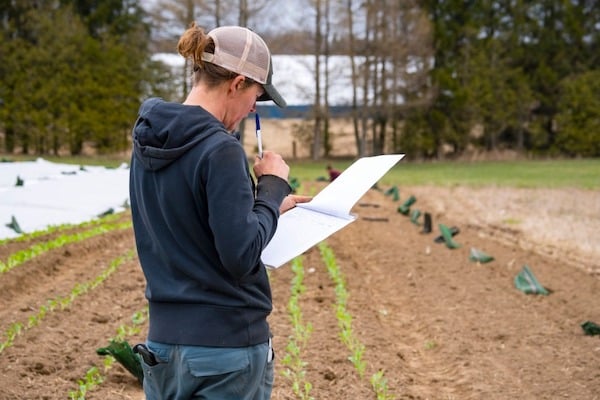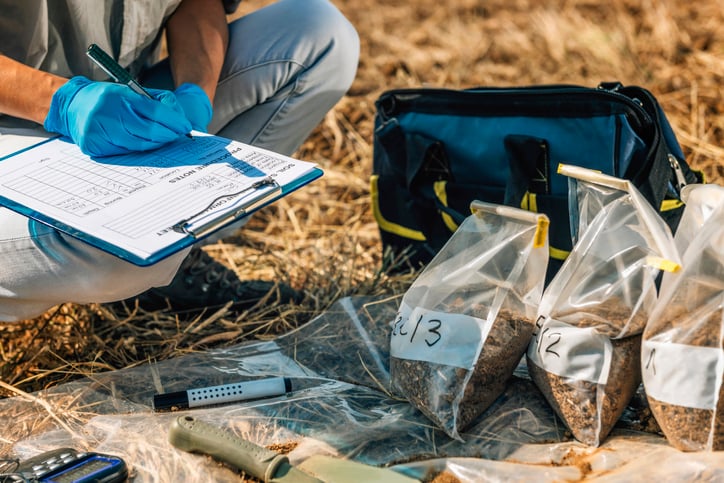Precision agriculture tools are typically beneficial to farms' bottom line in the long run: from aerial imagery to automation, new technology helps reduce input costs and boost yields and revenue. But for growers operating on tight margins, the early costs of adoption can be a barrier to getting started.
Fortunately, there's help available. From environmentally focused cost-sharing programs to tax credits, several programs exist to make new technology more accessible.
Environmental Quality Incentives Program (EQIP)
One important option to be aware of is the Natural Resources Conservation Service (NRCS) Environmental Quality Incentives Program (EQIP). This federal cost-share program helps farmers implement projects that address an environmental resource concern, such as water use or soil quality.
Usually NRCS will help cover 75% of the practice, says Sami Tellatin, co-founder of FarmRaise, a farm funding platform. Historically underserved producers may receive up to 90% and be eligible for advanced payment. (More typically, money is issued as a reimbursement.)
Growers may wait between 3 and 12 months to receive payment, and it does constitute taxable income. But there are benefits to EQIP beyond the funding itself. “Your local county representatives are going to be your on-the-ground partner,” Tellatin says. “In a way, you’re expanding your range of farm advisors.”
To qualify, a farm must:
- Own or control the land (through a rental agreement, for example)
- Meet the adjusted gross income limitation, which is $900,000 for fiscal years 2019-2023
- Be in compliance with conservation requirements for highly erodible land and wetlands
- Establish or update records with the Farm Service Agency
If a farm qualifies, growers fill out the paperwork and then contact NRCS, who will conduct an on-site visit and create a conservation plan. Once a grower applies, they’re ranked against other applicants. Because many projects are eligible, Tellatin says only about 30% receive funding in any given year, but it’s straightforward for growers to reapply if not successful the first time around.

Growers can improve their odds of receiving EQIP funding if their proposal addresses an existing resource concern in their region. (To find out about high priorities in their area, growers can contact their county NRCS office.) When growers submit their application, Tellatin also recommends that they include a map of where on the farm they plan to implement the practice. Another tip? "Include an introductory paragraph to help weave together your story," Tellatin says. "[Explain] why this particular practice helps mitigate a resource concern on the land."
R&D tax credit
Another financial opportunity is the R&D tax credit, a 20% federal tax credit that can be used to offset tax liability or payroll taxes. Many states also offer their own credit, between 3% and 15%.
The purpose of the credit is to reward innovation, but that doesn’t mean the practice needs to be brand new to the world—just new to your business, says Barry Devine. Devine is Regional Director of Tri-Merit, a specialty tax firm.
To qualify for the credit, the activity must pass the four-part test, which states that projects must be:
- Technological in nature
- Eliminating uncertainty
- Providing a new or improved business component
- In a process of experimentation
"There are no requirements on types of companies, types of industry, [or] size,” Devine says. “As long as any taxpaying entity in the U.S. is performing the qualified activities, they can apply for this credit."
While the requirements may sound daunting, Devine says that growers who are trying new ways to improve an aspect of their farm probably already qualify. "A lot of their every day trial and error fits the definition of the four-part test," he notes.

If their activity qualifies, growers can receive the credit based on qualified research expenses. This includes any salaries or wages paid under the research, supply costs, contractor research, and rental computer costs.
Because the R&D tax credit is based on expenses, growers will need to cover the upfront costs of the qualifying technology or practice. And if a farmer is audited, the burden of proof is on them. That’s why it’s highly recommended that growers work with a tax firm to first complete an R&D study, which will evaluate what far activities qualify and how to monetize them.
That takes some effort, but Devine says the payoff is worthwhile for many growers. "There is no disadvantage to saving money on taxes."
Additional funding opportunities
Of course, EQIP and the R&D tax credit aren’t the only financial avenues to explore for growers looking for help getting started with aerial data or other farm technologies. An experienced CPA can help farms find additional ways to reduce tax liability. And Tellatin notes that NRCS has other grant programs, such as the Conservation Stewardship Program (CSP) and the Conservation Innovation Grant (CIG). Sustainable Agriculture Research and Education (SARE) also offers research and education grants to farmers and ranchers.
